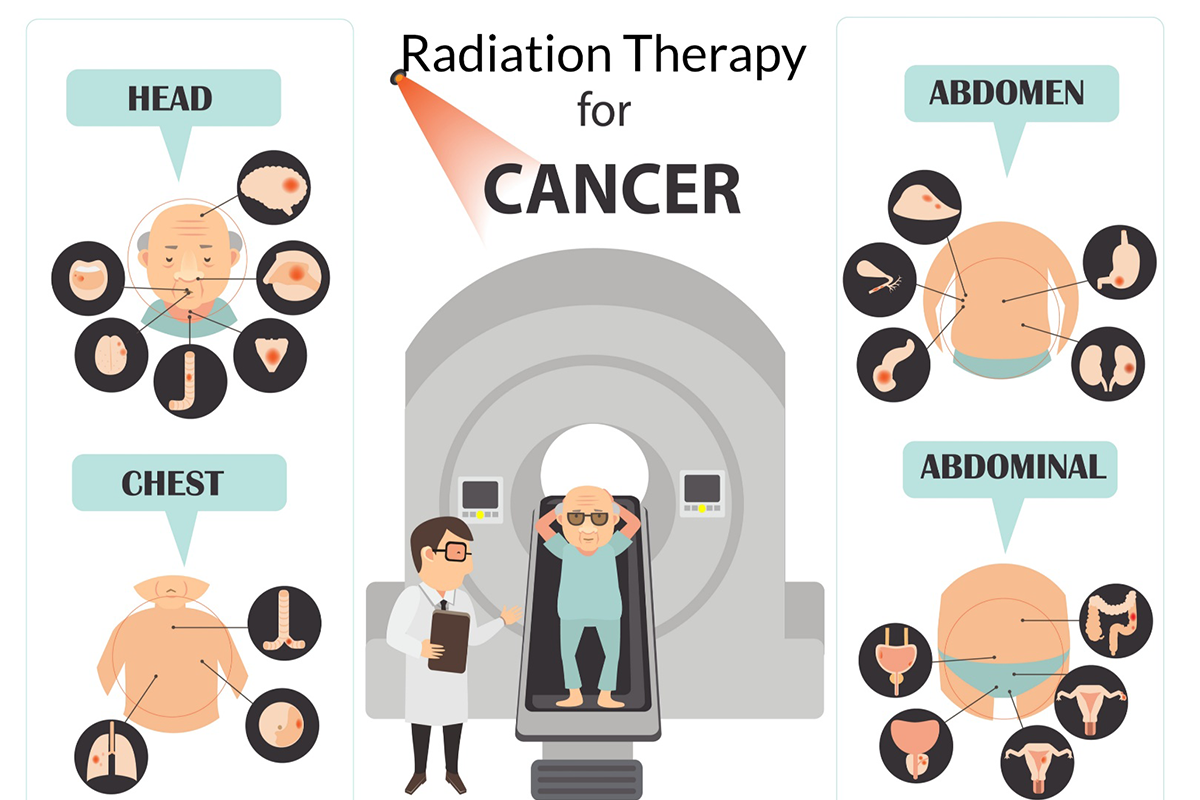Why people with cancer receive radiation therapy
Cancer is a disease in which some of the body’s cells grow uncontrollably and spread to other parts of the body. Cancer can start almost anywhere in the human body, which is made up of trillions of cells. Normally, human cells grow and multiply (through a process called cell division) to form new cells as the body needs them. When cells grow old or become damaged, they die, and new cells take their place.
Radiation therapy is used to treat cancer and ease cancer symptoms. When used to treat cancer, radiation therapy can cure cancer, prevent it from returning, or stop or slow its growth. When treatments are used to ease symptoms, they are known as palliative treatments. External beam radiation may shrink tumors to treat pain and other problems caused by the tumor, such as trouble breathing or loss of bowel and bladder control. Pain from cancer that has spread to the bone can be treated with systemic radiation therapy drugs called radiopharmaceuticals.
Types of cancer that are treated with radiation therapy
External beam radiation therapy is used to treat many types of cancer. Brachytherapy is most often used to treat cancers of the head and neck, breast, cervix, prostate, and eye.
How radiation is used with other cancer treatments
For some people, radiation may be the only treatment you need. But, most often, you will have radiation therapy with other cancer treatments, such as surgery, chemotherapy, and immunotherapy. Radiation therapy may be given before, during, or after these other treatments to improve the chances that treatment will work. The timing of when radiation therapy is given depends on the type of cancer being treated and whether the goal of radiation therapy is to treat the cancer or ease symptoms.
When radiation is combined with surgery, it can be given:
Before surgery, to shrink the size of the cancer so it can be removed by surgery and be less likely to return. During surgery, so that it goes straight to the cancer without passing through the skin. Radiation therapy used this way is called intraoperative radiation. With this technique, doctors can more easily protect nearby normal tissues from radiation. After surgery to kill any cancer cells that remain.
Working during radiation therapy
Some people are able to work full-time during radiation therapy. Others can work only part-time or not at all. How much you are able to work depends on how you feel. Ask your doctor or nurse what you may expect from the treatment you will have.
You are likely to feel well enough to work when you first start your radiation treatments. As time goes on, do not be surprised if you are more tired, have less energy, or feel weak. Once you have finished treatment, it may take just a few weeks for you to feel better—or it could take months.You may get to a point during your radiation therapy when you feel too sick to work. Talk with your employer to find out if you can go on medical leave
Special diet needs while on radiation therapy
Radiation can cause side effects that make it hard to eat, such as nausea, mouth sores, and throat problems called esophagitis.
Since your body uses a lot of energy to heal during radiation therapy, it is important that you eat enough calories and protein to maintain your weight during treatment.
If you are having trouble eating and maintaining your weight, talk to your doctor or nurse. You might also find it helpful to speak with a dietitian
If you would like to know more about the treatment options available for radiation therapy , you can consult Dr Soma Srikanth, a renowned Surgical onchologist in Hyderabad. He has more than a decade of experience in cancer treatment.



